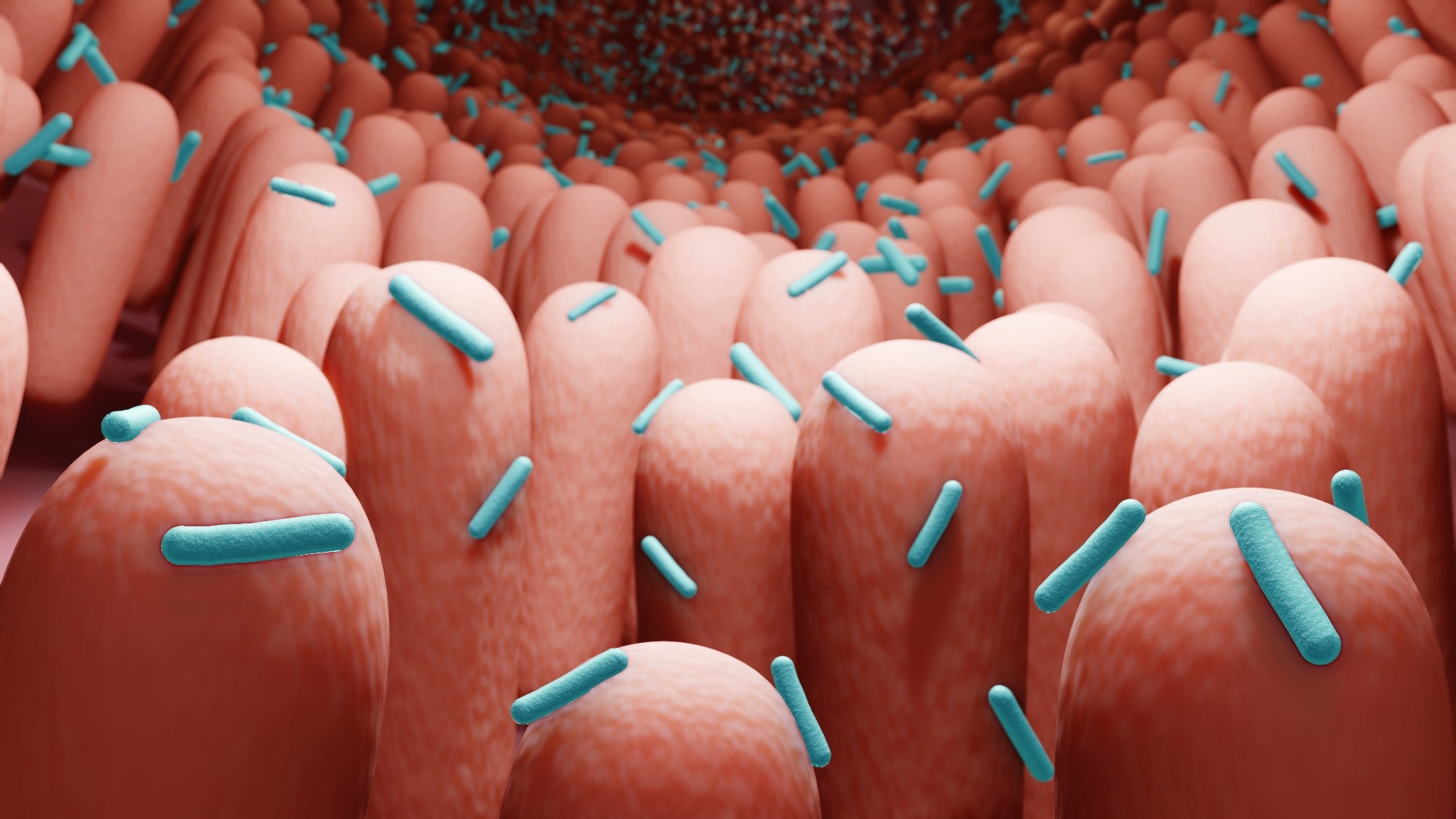In a recent study posted to the medRxiv* preprint server, researchers reconstructed gut bacterial genomes.
The study identified metabolic pathways that are differentially expressed in response to a microbiota-directed complementary food prototype (MDCF-2) in metagenome-assembled genomes (MAGs) related to changes in weight-for-length Z scores (WLZ).
They also evaluated the impact of differential genetic expression on MDCF-2 component processing and ponderal growth responses.
 Study: Bioactive glycans in a microbiome-directed food for malnourished children. Image Credit: ART-ur/Shutterstock.com
Study: Bioactive glycans in a microbiome-directed food for malnourished children. Image Credit: ART-ur/Shutterstock.com

 *Important notice: medRxiv publishes preliminary scientific reports that are not peer-reviewed and, therefore, should not be regarded as conclusive, guide clinical practice/health-related behavior, or treated as established information.
*Important notice: medRxiv publishes preliminary scientific reports that are not peer-reviewed and, therefore, should not be regarded as conclusive, guide clinical practice/health-related behavior, or treated as established information.
Background
Childhood malnutrition is a significant global health challenge, causing long-term consequences such as impaired growth, immune and metabolic functions, and neurodevelopment.
The severe acute respiratory syndrome coronavirus 2 (SARS-CoV-2) outbreak has exacerbated this issue, with children with moderate or severe acute malnutrition (MAM or SAM) experiencing impaired ponderal growth and microbial community development.
Designing efficient microbiota-targeted therapeutic foods is crucial to addressing these perturbations and improving children's nutritional status.
About the study
In the present study, researchers comparatively evaluated the change in weight following MDCF-2 treatment versus the conventional and more calorie-dense RUSF treatment among MAM children.
The team used biological specimens from participants of a randomized clinical trial comparing MDCF2, which induced more weight gain than ready-to-use supplementary food (RUSF) among Bangladeshi children aged 12 to 18 months with MAM.
Individuals receiving MDCF-2 vs. RUSF (25g servings, providing 220 to 250 kcal daily) twice daily for 3.0 months and MDCF-2 recipients in the uppermost vs. lowermost quartiles of weight gain responses were compared.
A total of 1,000 MAGs in fecal microbiomes related to ponderal growth responses were reconstructed using deoxyribonucleic acid (DNA) isolated from stool specimens (n=942; seven to eight samples from each participant).
Polymerase chain reaction (PCR) amplicons generated from bacterial 16S ribosomal ribonucleic acid (rRNA) genes in fecal biological specimens were sequenced.
Fecal specimens were obtained every 10.0 days in the initial month and every 4.0 weeks thereafter. Ultrahigh-performance liquid chromatography-triple quadrupole mass spectrometry (UHPLC-QqQ-MS) was used to quantify carbohydrate structures of MDCF-2.
Gnotobiotic mice colonized with WLZ- and age-related bacteria, cultured from the participants, and provided diets similar to those followed by participants were used to determine the association between MDCF-2 glycan utilization, Prevotella copri, ponderal growth of the host, and genetic metabolism in the gut.
Gnotobiotic mouse and piglet models were used to design MDCF formulations for restoring the gut microbial balance of MAM children.
Taxonomy was assigned to MAGs using Genome Taxonomy Database (GTDB) data. Linear mixed effects modeling was performed to identify MAGs with abundances significantly related to weight gain.
Results
MDCF-2 contained significantly more mannans and galactans than RUSF, whereas RUSF contained significantly more cellulose and starch. 59 MAM children from each group completed the treatments and one month of follow-up.
Of the 1,000 reconstructed bacterial genomes, the abundances of 75 genomes showed positive associations with gain in weight and characterized changes in MAGs in response to therapy type and weight gain response.
MAGs showing significant and positive associations with weight gain are predominantly linked to the Blautia, Agathobacter, Prevotella, and Faecalibacterium genera.
The gene set enrichment analysis (GSEA) findings showed that MAGs whose abundances increased faster in the MDCF-2 compared to the RUSF group were significantly enriched for those positively associated with WLZ.
PCR amplicon sequencing showed 23 bacterial taxa significantly related to WLZ; 21 were positively associated, while two were negatively associated. The abundance of the positively associated taxa increased to a significantly greater extent with MDCF-2 in comparison to RUSF treatment.
The analysis revealed an MDCF-2-associated pattern of gene expression characterized by significant enrichment of three metabolic pathways related to carbohydrate utilization [fucose, arabinose, and arabinose-oligosaccharide (aAOS)], three pathways associated with de novo amino acid synthesis (lysine, arginine, and glutamine), and one pathway for de novo vitamin synthesis (folate).
Two MAGs of Prevotella copri, showing positive associations with weight gain, majorly contributed to the microbiota-directed complementary food prototype-regulated transcription of metabolic processes involved in using its constituent glycans.
Furthermore, the estimated particularities of carbohydrate-related digestive enzymatic substances released from polysaccharide use loci (PUL) in the two MAGs were associated with (i) the in vitro development of Bangladeshi Prevotella copri strains with varying degrees of polysaccharide usage loci and the overall genetic content comparable to the MAGs grown in defined mediums with distinct isolated glycans indicative of the ones constituting the microbiota-directed complementary food prototype, and (ii) the number of carbohydrates found in the stool samples of the participants.
Serological proteomic analyses showed 70 proteins with significantly positive associations with weight changes, including neurodevelopment and musculoskeletal growth mediators.
The proteins increased significantly more among MDCF-2 recipients than among RUSF recipients. Several proteins associated with immuno-inflammatory processes showed negative correlations with weight gain and markedly reduced following MDCF-2 treatment.
Conclusion
Overall, the study findings showed that MDCF-2 significantly improved weight gain rates in comparison to RUSF, even with a 15% lower caloric density, and had key mediators in microbiome responses, affecting ponderal responses and glycan utilization in the host.
Identifying biologically active glycans in microbiota-directed complementary food prototypes metabolized by bacterial taxa related to growth could guide recommendations for use among malnourished children and enable the formulation of biologically equivalent alternatives.

 *Important notice: medRxiv publishes preliminary scientific reports that are not peer-reviewed and, therefore, should not be regarded as conclusive, guide clinical practice/health-related behavior, or treated as established information.
*Important notice: medRxiv publishes preliminary scientific reports that are not peer-reviewed and, therefore, should not be regarded as conclusive, guide clinical practice/health-related behavior, or treated as established information.